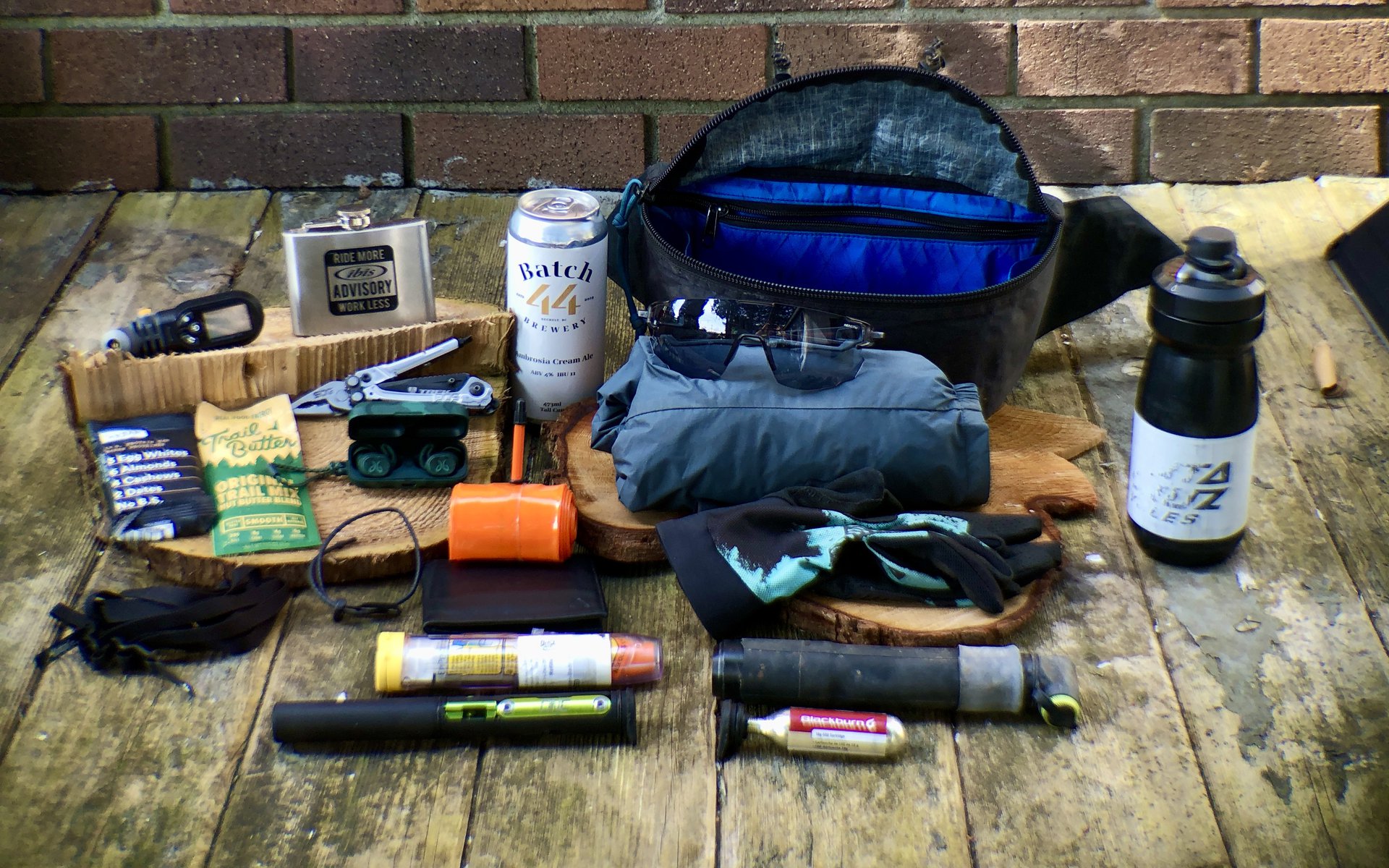
WHATCHA PACKIN'?
Pete Roggeman's Spurcycle Hip Pack and Contents
Whatcha Packin' is an NSMB column devoted to the gear we carry with us when we ride. Whether it's for self-reliance and repairs or little luxuries that make the ride that much sweeter, these are the things we're using - and carrying.
Brought to you by Tubolito, makers of lightweight, low-bulk tubes. Whether you run them in your wheels or use them as spares, Tubolito's tubes will drop noticeable amounts of weight and space from your every ride carry.
Get someone to run you through everything they carry for a ride, and you'll learn something about them as a rider. An abundance of tools and spare parts may point to someone who likes to be prepared like a Boy Scout, or maybe they've been riding a long time and have a vivid recollection of every mechanical that had them spending 20 minutes trailside with freezing fingers, trying to force a tire back onto an old Sun-Ringlé Rhino-Lite. Bare bones carry? Could be a very experienced local who is never far from home, or has an aversion to carrying extra weight and doesn't mind the risk of walking home when a ride meets a premature end; or maybe they're just a total n00b. Piece by piece, you'll learn who has snapped an inordinate amount of chains, and who thinks a chain-breaker is ballast; one group carries two tubes, a pump, and C02, another school of thought runs CushCore and eschews all forms of self-rescue in case of unplanned deflation.
My packs' contents have changed frequently over the years, but the emergence of slick new ways to carry self-rescue and preparedness gear, along with the surging popularity of hip packs instead of 10-20L backpacks has had me paring down wherever possible, without being that guy that flats and doesn't have a tube, or even $10 to offer someone riding by that may have a spare.
I get a chance to try out lots of different bags, but like anyone else, I have my favourites, and the longer you use a pack - or any system like SWAT - the more you start to adapt what you carry to the space you have available. Certain tools fit well in some pockets, and I spend more time carrying tools than using them, so how I carry them starts to be optimized over time. In the last few years, I went from using backpacks full time, to hip packs in the summer and fall, and now I use hip packs for most of the year, which works fine for rides under 2 or 3 hours, and if I'm able to layer properly. If the weather is horrible, or for longer or remote rides, I'll carry more - spares, food, emergency gear - but for most rides of three hours or less, keeping it simple almost never bites me in the ass. The gaping hole in the load out below is first-aid and I'll be the first to admit that needs to improve. Stay tuned on that one, I have a plan.
Spurcycle Hip Pack
I like hip packs. From Dakine, to From High Above, to Osprey, and now this one from Spurcycle, I enjoy freedom from shoulder straps and less to carry. Spurcycle's Hip Pack is a true sleeper, though. When it first showed up I obsessed a bit about my feelings regarding the plain looks (from the outside) and the $135 US price tag. But then I started using it and right away came to appreciate that it's sized perfectly - its 4-liter capacity can handle the weight when full, but you can't overload it past a comfortable level - and the feature list is just right. For starters, it's made from Dyneema, which is a polymer that is both more abrasion resistant and lighter than Kevlar. It is also flame-resistant, and doesn't absorb water. Lastly, it's light as hell. Naturally, it's not cheap, but it is an ideal material for bags made to last.
In addition, it's got Spurcycle's clean styling and design, is supremely well made, and it fits just right. There are four internal pockets that nicely fit things like energy bars and multi-tools, and one long, thin zipper pocket where I stash my wallet and anything else I want to make sure stays dry. The interior is lined in a very nice blue, which makes it easier to find something at a glance than black fabric, which sucks up light and all small things. There are two elasticized and adjustable lashes on the top of the bag - these are useful to stash a bulkier than normal jacket or other layer and I've only used them a handful of times but appreciate their presence.
The main zipper is heavy-duty and easy to use one-handed, but that also points to one of only two qualms I have: it's not a waterproof zipper. Here, you always have to make a choice, because a waterproof zipper is harder to operate with one hand, which matters with hip packs if you want to access it without sliding it around to the front and instantly gaining 20 years and losing any semblance of pride. Win some, lose some. The only other reservation I have about the Spurcycle pack is that it doesn't have any belt-mounted side pockets, which are my favorite place to put a phone or tool, however when your tool's in your stem and you're used to not having your massive phone so easily at hand, the problem is less significant.
Overall, I've decided the Spurcycle Hip Pack is best in class for me among the many other options I've tried and its premium price is easily offset by the fact that it will last a decade or more thanks to its bomber construction and Dyneema fabric. And as you'll see below, it easily swallows a whole bunch of gear with ease, and I love the boxy, flat-bottomed shape which makes it easy to find what I need, quickly, and keeps everything organized without requiring a game of memory to be reminded of what's hiding where.

All the things. It's remarkable how much there is hiding in the Spurcycle Hip Pack when you lay it all out. To be fair, the bottle, OneUp EDC tool, and pump are all strapped to the bike, not included in the hip pack.

The Spurcycle Hip Pack gets a lot of things just right, in an unassuming way that surprised me. The four open pockets are way more handy than I thought they would be. Here you can see how easily one of them gobbles an RX Bar and a package of Trailbutter, another is a perfect fit for a short hip flask. One you can't see is a perfect place to slide my Topeak Smartgauge D2 and SOG Reactor pliers and multi-tool. And that funny green box houses my Jaybird Vista wireless earbuds (for solo rides only).
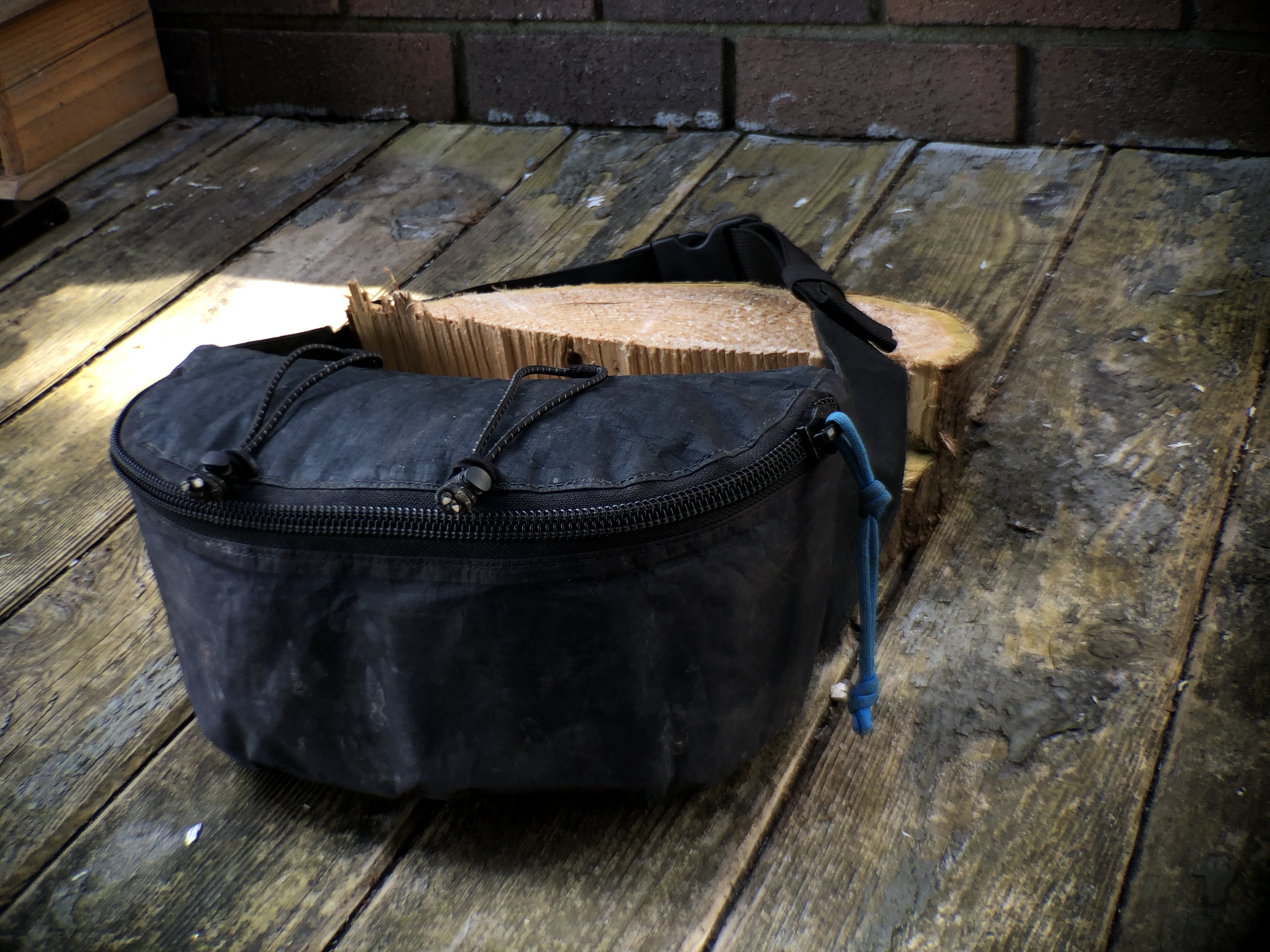
Proof! Everything inside (yes - including the beer). When it's this full, including almost a half liter of beer, it's a bit heavy, but I've still ridden steep, bumpy lines with the bag filled like this, and it's no problem. Stays in place, doesn't bounce uncomfortably. Way to go, Spurcycle.
Essential Tools for Every Ride
Let's start with the basics, then. Lots of stuff can be considered optional, but if you're not carrying the bare minimum: multi-tool, tube, and source of inflation, then you're leaving yourself open to mechanicals that happen regularly. Everything outside of what is fixable by the holy trinity is always a possibility, but way less likely. And, depending on the wheel/tire setup you run, even a tube and inflation is optional*, but there's no getting around carrying a tube. For me, the essentials go a little deeper, but that's partly because some of the on-board carry options are so good now.
- Multi-tool: OneUp EDC. There aren't many tools that are more clever, or have more 'save your ass' options packed into such a small, yet effective package. Multi-tool, with allen keys from 2 to 8mm, chain breaker, spoke wrenches, T25, tire lever, presta valve tool, flathead screwdriver...it's remarkable.
- Tube: Tubolito - I haven't needed a tube for over a year, but I'm not quite ready to stop carrying one. So, the lightest, smallest option that will still work when it's needed makes a lot of sense. Tubolito is the only solution that saves weight and space. In fact, if you consider a tube essential, running a Tubolito for about $35 US saves WAY more grams per dollar than any other upgrade you can buy. Whether the 85g Tubo MTB, 110g Tubo-MTB-Plus, or the svelte 45g S-Tubo-MTB, you're saving a lot of weight over a 230-300g 29er tube. Expect to see a lot more of the trademark orange compact tubes on bikes near you in the near future.
- Pump: OneUp 70cc. It's compact, effective, and reasonably efficient. More people I know run this pump than any other, for good reason. Since I run the OneUp EDC tool inside my stem, that frees up the space at the top of the pump to carry something extra. In the photo it's a 16g Blackburn C02 cartridge, but it's not hard to imagine a whole bunch of other things that fit in there and benefit from easy access as well as waterproof storage.
- Digital gauge: Topeak Smartgauge D2. Works on presta and schraeder as well as high pressure, so you can also use it to measure your shock pressure. Essential for pre-ride checks, but I just leave it in the bag now so I always have it handy.
- Pliers: SOG. This tool is actually, overall, a piece of shit: the blade is cheap and the locking mechanism is dangerously unreliable, the bit/drive system is crap, anyone that needs a bottle opener built into a multi tool just needs to revisit how to open a beer, BUT the multiplicative power effect of these pliers and its overall light weight has made it a great tool for my riding bag, and despite the fact that it's not the best at everything, I still love it. Now that presta valve stem tools are so ubiquitous, this tool is redundant, and it's coming out of the bag (to see emergency duty in the truck console), but I've been carrying it for years and it's still in there, so in the spirit of honesty, I included it.
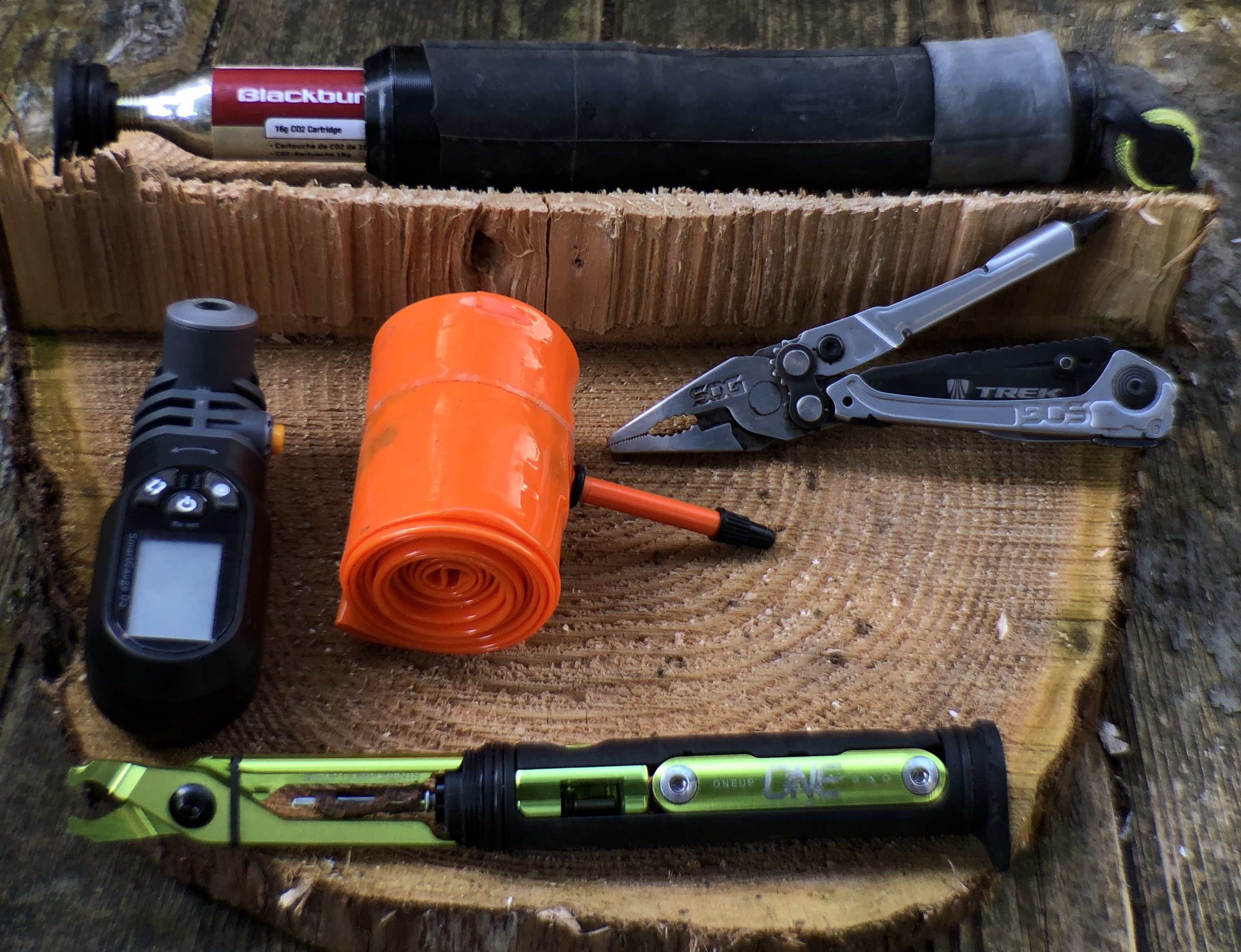
OneUp handles EDC multi-tool and pump duties (including tire repair strips, pliers for master link, C02 inflator head, and of course a very complete multitool including chain breaker and spoke wrenches). Tubolito for the spare tube. Topeak's Smartgauge D2 keeps my 2.5s at the right inflation. SOG for the pliers and blade (soon to be replaced).
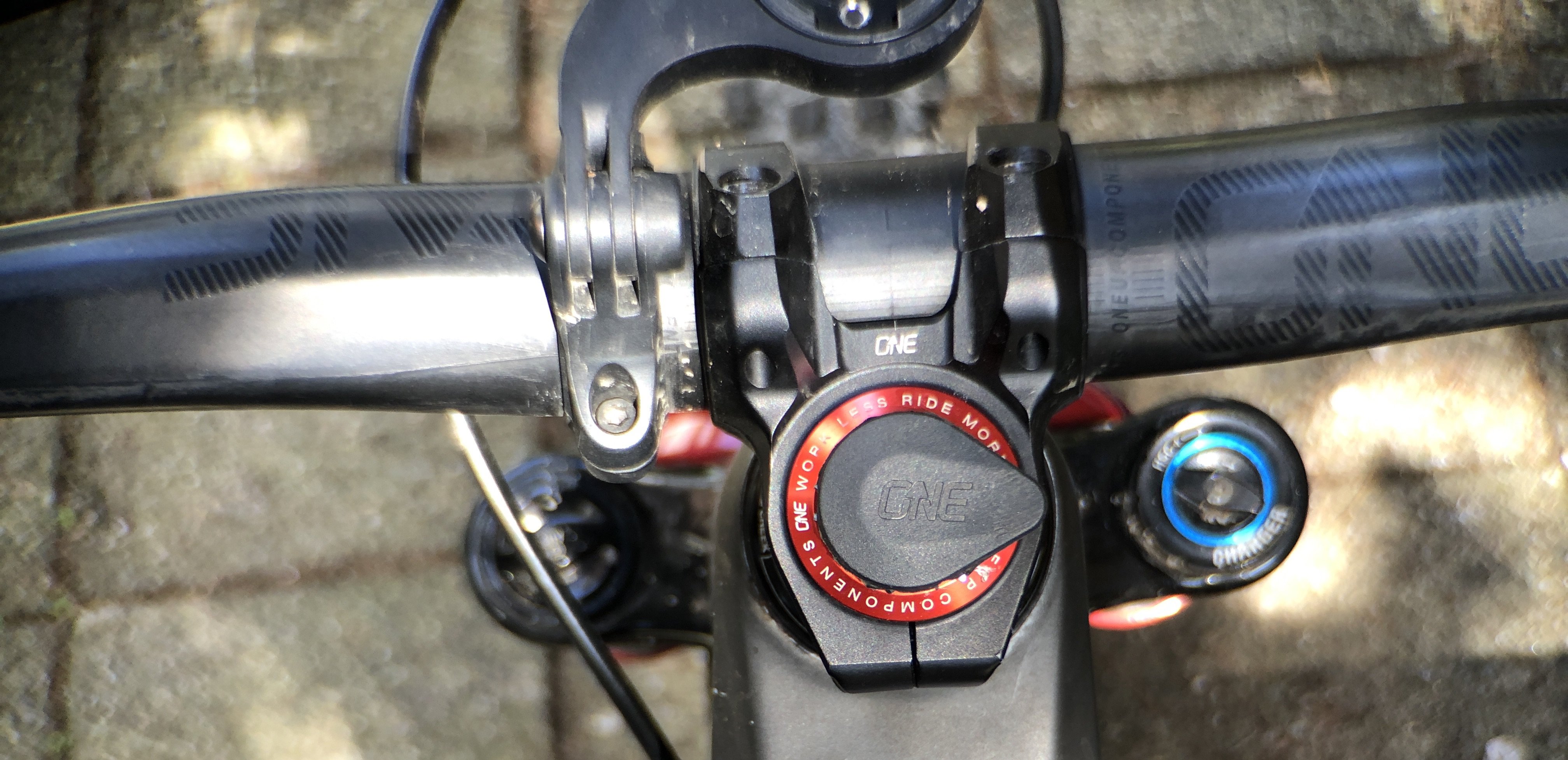
The OneUp EDC tool goes inside the stem. I'm using the OneUp stem and bar, which employs a slightly different system to keep the tool in place - more on that another time, b/c it's not bad but not perfect, but the stem is nice looking, and the bar definitely is more compliant than all other carbon bars and most alloy bars.
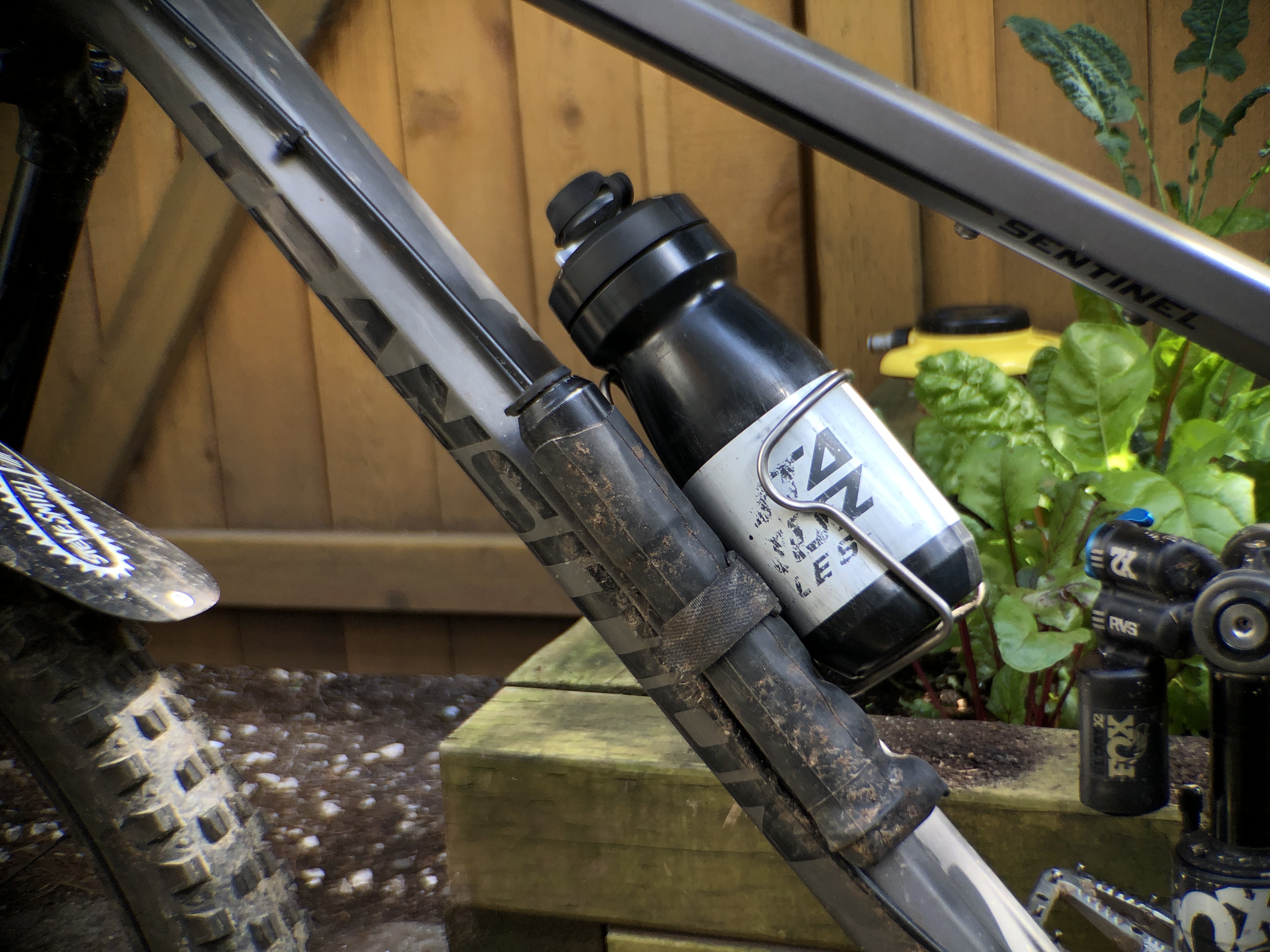
The OneUp 70cc pump (they also make a 100cc version) rides shotgun on the bottle cage (in this case a $17 US Blackburn Chicane steel cage which is cheap and effective, and pretty good looking, too). Inside the pump you can hide your EDC tool, but since mine's in the stem, I use that space to stash a C02 cartridge, or fodder for safety meetings. Note the tube wrap on the pump - I stole that from AJ.
Tubes and a cool tool from Ritchey
Once upon a time I worked for Ritchey, and something I think is quite funny is that Tom is known for a lot of firsts and inventions (too many to name here but we're talking really old school significant things like sloping top tubes and triple-butted tubing), but there are lots of things I've never seen him credited for, that he was doing decades before they were normal. These include riding his road bike on MTB trails and off-road (I think the kids with impressive facial hair that live with their parents call that 'gravel riding'), selfies from the saddle (with film cameras) and a progressive approach to touring (with just a credit card and some flip flops), as well as really innovative multi-tools. The funny part is that he's on the record as saying that marketing is the biggest obstacle to good product design, but it's also an aversion to marketing that kept some of the things I just mentioned from helping him build his brand into more of a powerhouse.
Anyway, back to multi-tools. The one pictured below may not be innovative compared to a OneUp EDC but it's over 20 years old and still kicks ass. It's called the CPR-4 (Compact Pocket Rescue) and I hoarded a few copies when I worked there and the main reason I still have them are the metal-infused tire levers with resin coating, making them gentle on carbon rims but tough as hell. There is also a 4mm and a 5mm allen key, as well as box wrenches (basically useless during rides), a flathead screwdriver that doubles as a pry tool, and even strips for roughing up a tube when fixing a flat (with a patch! I know - it's a really old tool and I love it). I really oughta grind off the 4 and 5mm allen keys and slim them down, but anyway, I've carried these tools on road and mountain bike rides since 2004, and I'll never let them go. Ritchey still makes an updated version called the CPR-12 and it's decent but not nearly as cool.
Also shown below - the size of a Tubolito MTB Plus (the 110g version) versus a typical 29" tube. Way smaller. Easy choice, makes room for snacks.

A Ritchey CPR-4 (Compact Pocket Rescue), plus, top left, a Tubolito MTB-Plus, which is rated for 29 x 2.5-3" tires, and weighs a mere 110g, with a regular 29" tube for scale (which weighs 250 grams, for reference).
Sustenance
Look, I'm not gonna hide it - most of us ride bikes in part because we love riding, and partly because we love eating and drinking. The more I ride, the more I can eat and drink, without getting fat(ter). So, while this is going to look indulgent, I think it's important to both be honest about what happens (at least on Friday rides) and the fact that, as in so many things in life, being open to possibilities is at least as important as whether or not you bring those to life. So, when we're talking about carrying stuff on a ride, we have to consider that certain rides call for a beer at the top, others are improved by a wee dram, and sometimes you need both to get by*.
*just as often, neither. But also, where beer is called for, a tallboy is better than a regularboy.
I go back and forth between different energy bars and gels, but RX Bars are winning more than others these days. However the real revelation has been Trailbutter, which is delicious, easy to digest, and full of good ingredients and energy. There are a lot of ways to keep yourself sustained on the bike, but since I've started intermittent fasting, I don't come close to the bonking edge as much as I used to, but I also often find myself eating at the start or halfway through the ride when that magical 11am interval comes around, and Trailbutter is the thing I always feel like eating. I rarely have trouble eating on the bike but backcountry skiing is a different issue - on strenuous days, eating can be a problem for me. I hoped to test out Trailbutter this year but the coronavirus kept me from doing any touring, so I'll be testing it out more next year. Until then, it's still my favorite on-bike nutrition.
Water bottles aren't a huge source of mystery or review, however I have to highlight the updated Camelbak Podium Dirt Series. It has a locking lid so you can pack it without worrying about spillage in transit, the lids and spouts have been made shorter in order to fit into more front triangles than its predecessor, and the 'Dirt Series' part simply denotes a rubber cap that is easy to remove with your mouth while riding. I didn't know how much I appreciated that rubber cap until I started using the new Podium and then switched back to another bottle on a muddy winter day. Apparently I'd gotten used to drinking out of dirty spigots over the years, but it just takes one ride in cattle country to remind you why that isn't a good situation.
I wrote about the Jaybird Vista earbuds in one of our holiday gift guides, but I'll repeat here: they're not cheap at $179 US (regularly on sale, like right now, for $159) but for a quality pair of true wireless earbuds, they're mid-pack, price-wise but a leader in features for riding and outdoor use. Why? First, you can use one or the other alone, which is much safer, and they'll automatically switch to mono mode, so you don't miss the music or any detail from whatever podcast you're listening to. Second, they're waterproof, and resistant to dust and impact to levels you'd be hard-pressed to exceed. And they fit well and sound good. They pair so easily and quickly that I even put them in when going out for 5-10 minutes - as a result I'm listening to far more podcasts while walking the dog or running errands. And they sound really good for phone calls, to boot.
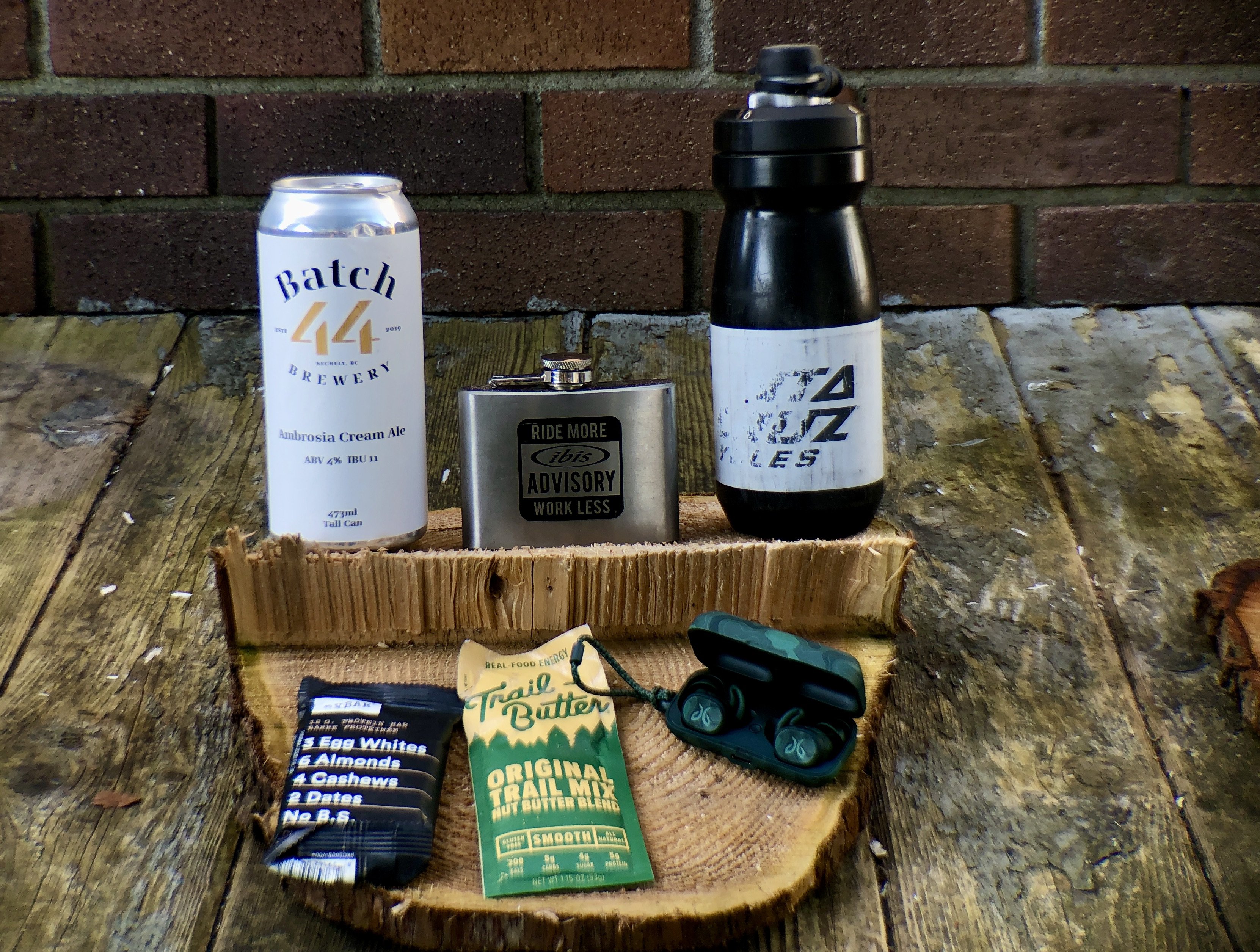
Just discovered Batch44 brewing in Sechelt on the Sunshine Coast last weekend, and it's not bad at all. The shorty flask was a gift from Saris at Ibis at Sea Otter last year, and it fits perfectly into one of the slash pockets in the Spurcycle hip pack, so it has a permanent home in there even though I don't touch it on most rides. The Camlebak Podium Dirt Series 21 oz. bottle is my new fave, and obviously rides on the bike. For food, RX Bars always go down well, and Trailbutter is perfect for those 'I'm bonking' moments. Lastly, for solo rides only, Jaybird Vista true wireless earbuds are phenomenal, and have allowed me to listen to a lot more podcasts lately.
Clothing
At different times of year this varies, but the two constants for me for clothing are a lightweight jacket, and a spare pair of gloves. Andrew nailed it with his Emotional Support Jacket piece; more often than not, any layer will do when you get caught by surprise, so a small, compact option is very practical (just like Tubolito). For me over the past year that has been the Flylow Rainbreaker jacket. It's been discontinued in favour of the Flylow Davis, which is $15 cheaper, looks the same, and made of the same Intuitive S/G Lite material, so I can confidently recommend the Davis to anyone looking for a light duty rain/wind jacket that packs up small and will reward your $125 USD investment over and over again if you ride anywhere the weather can be sneaky. In addition to saving my ass on many rides, I've worn it hiking, camping, and golfing, with great success. It's not as breathable as a soft-shell or higher end waterproof/breathable layer, and not as waterproof as Gore-Tex, but for the money and the size, it is a great backup layer to carry on every ride.
Hot tip on thin layers - forget about whether it has a stuff sack built into a pocket. All you need to do is reach through one sleeve and pull the rest of the jacket into that sleeve. Presto - a nice burrito-sized jacket. When you need it, just grip the wrist and flick it, and the whole jacket will tumble out instantly. Also works for thicker jackets to keep 'em compact and the flick maneuver is a slick way to deploy quickly.
For gloves, generally any pair will do for backup duty, but I favour thin gloves without velcro, and thankfully there are a lot more good options now than ever. Lately I'm really loving the Dakine Thrillium, which may even be capable of knocking my all-time favorite POC Index Flow gloves off their perch (which I still own, incidentally - 6 years is a bloody long time for gloves!). In any case, the Thrilliums are thin, light, fit great, but also feel like they're built to last - not surprisingly, some thin gloves don't last very long but so far the Dakines are up to the task.
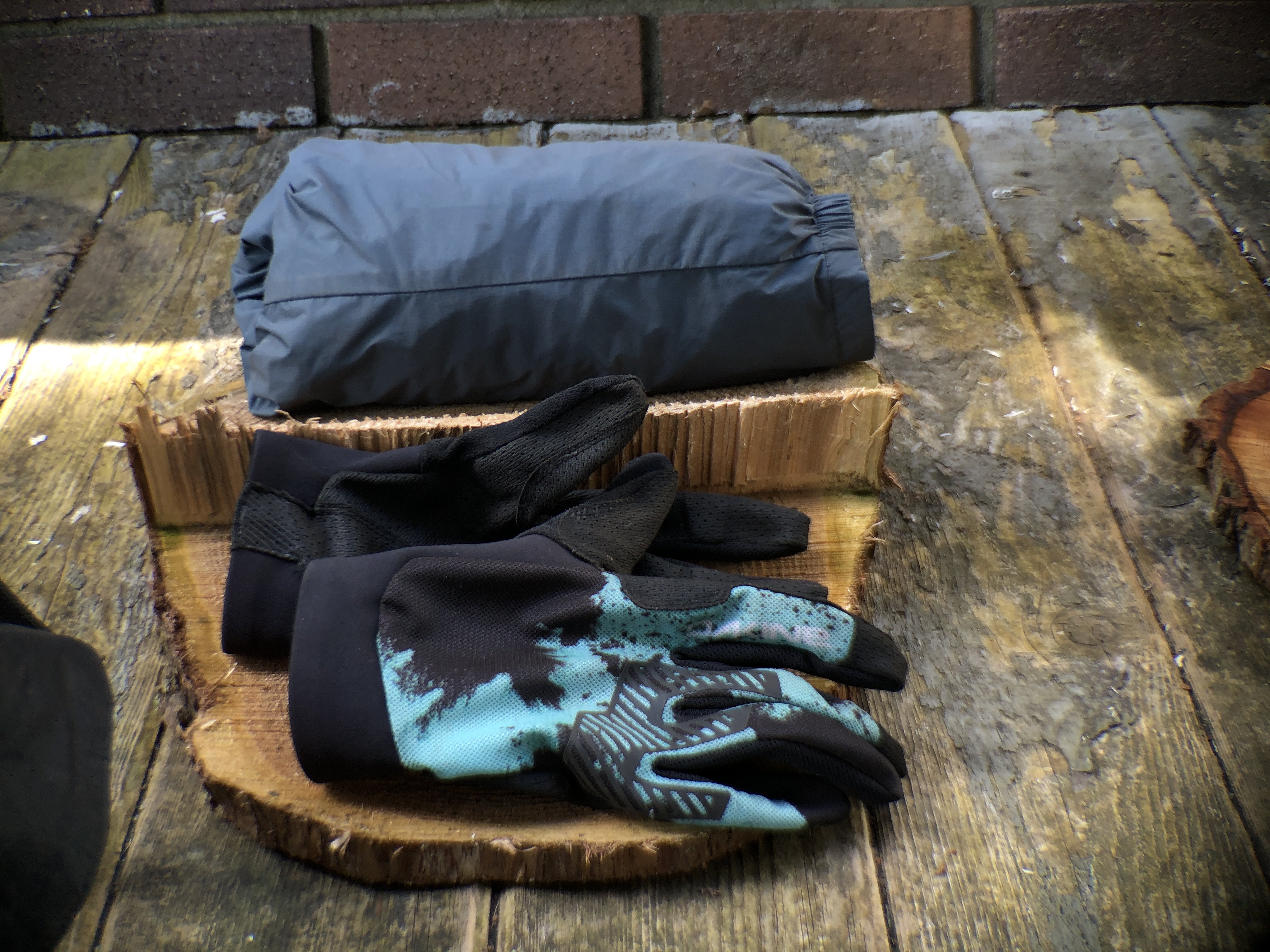
That grey burrito is a Flylow Rainbreaker, which has been my go-to thin shell for a year now. The first day I carried it, we got caught in a surprise rain/hail storm and it saved me from a very miserable 5km pedal back to the car. The gloves are Dakine Thrillium, and are turning into one of my favourite pairs for their thin but durable construction, tight fit and good bar feel.
Miscellaneous Essentials
A lot of times, I'd ride without a wallet, choosing sometimes to pluck a 20 and my DL out of my old leather Marzocchi billfold (almost 20 years old and going strong), but I've recently decided that is very dumb. ID, credit card, cash, at a minimum, but it's also handy to have BCAA for keys getting locked in a recovery shuttle rig, a few business cards, and all of a sudden it's my wallet again. But since I don't want my prized vintage wallet to get soaked 20-200 times a year, I've been carrying a thin, weather-resistant (but still leather) wallet from a company called Allett, and it's sneakily impressed me. It fits easily into small spaces, I don't have to fiddle, and it's thin and light. It's simple, black, and leather, with RFID available as an option.
A few years ago, I discovered I was allergic to bees. That summer I rode in groups that ran into ground wasps four different times, but I was only stung on the last occasion which was when I had an allergic reaction. I haven't had to use it, but I now carry an epi-pen (and Benadryl) between May and October. It's not heavy, but it is extra bulk. When doctor's appointments are more normal, I'll get properly tested for allergies, but until then, I'm playing it safe with that (if not with certain other first-aid needs I need to better address).
In Cam's carry article he mentioned Matador's excellent Re-ties, and I also carry one of their Better Tethers, useful for lashing things to...other things. Pretty useful, takes up no space, and practical to have on rides, in the truck, and when camping or otherwise out and about.
Next, I think eyewear counts here. I'm overdue to write about a few of my favorite riding glasses, but lately I've been using the Julbo Aerospeed Reactives. At first I thought they were overly Euro - sort of reminiscent of 90s era Brikos - but I got over that as soon as I put them on. They're light, have super nice distortion-free optics, and the Reactiv 0-3 lens goes from almost clear (appropriate for all but the wettest and darkest shore days) to quite dark (very effective even in midday sun - not that we've had a lot of that lately). They also clear condensation quickly and don't fog up very easily in the first place. One of the best pairs of riding shades I've used. So even when I'm not wearing them, they're in the bag, ready to go.
Lastly, stuff that isn't strictly bike-related but comes in handy. Back to Spurcycle, their Ti Key Clip is like a mini carabiner that gathers my keys together. I don't often clip it to my belt loop unless it's one of those in and out days and I need to keep them handy, but it's nice to have that option. You can swing the gate open to use as a bottle opener, but honestly, bottle openers are all around you, and it's way cooler to open one with your lighter, pedal, moving spoke, sharp edge of a table, or even another bottle. We're surrounded by bottle openers and they're mostly useless. Still, it's ti, it looks nice, and it's a utilitarian key chain. And on that chain, a small blade - the James Brand Elko - which I bought slightly used from eBay. I'm a swiss army knife fan but I wanted one of these and it's been useful when my pocket knife is out of reach. Having a blade on rides is never a bad idea, and I never have to think about it when it's attached to my keys. It, too, has a bottle opener, but it's basically just a small blade and a pry and I like it simple like that.
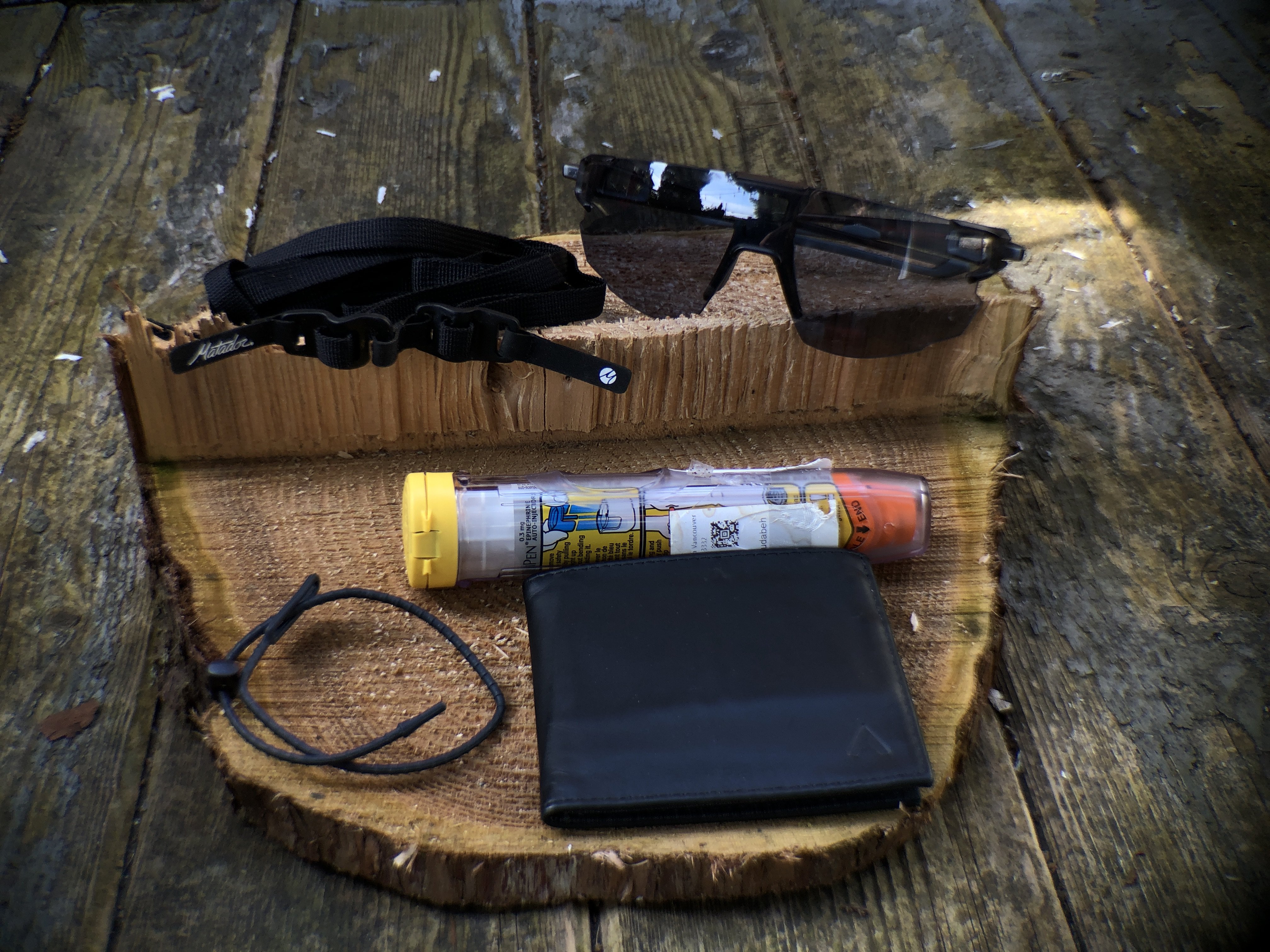
Matador Better Tether, Julbo Aerospeed Reactive glasses, Matador Re-tie, Allett leather wallet, epi-pen.
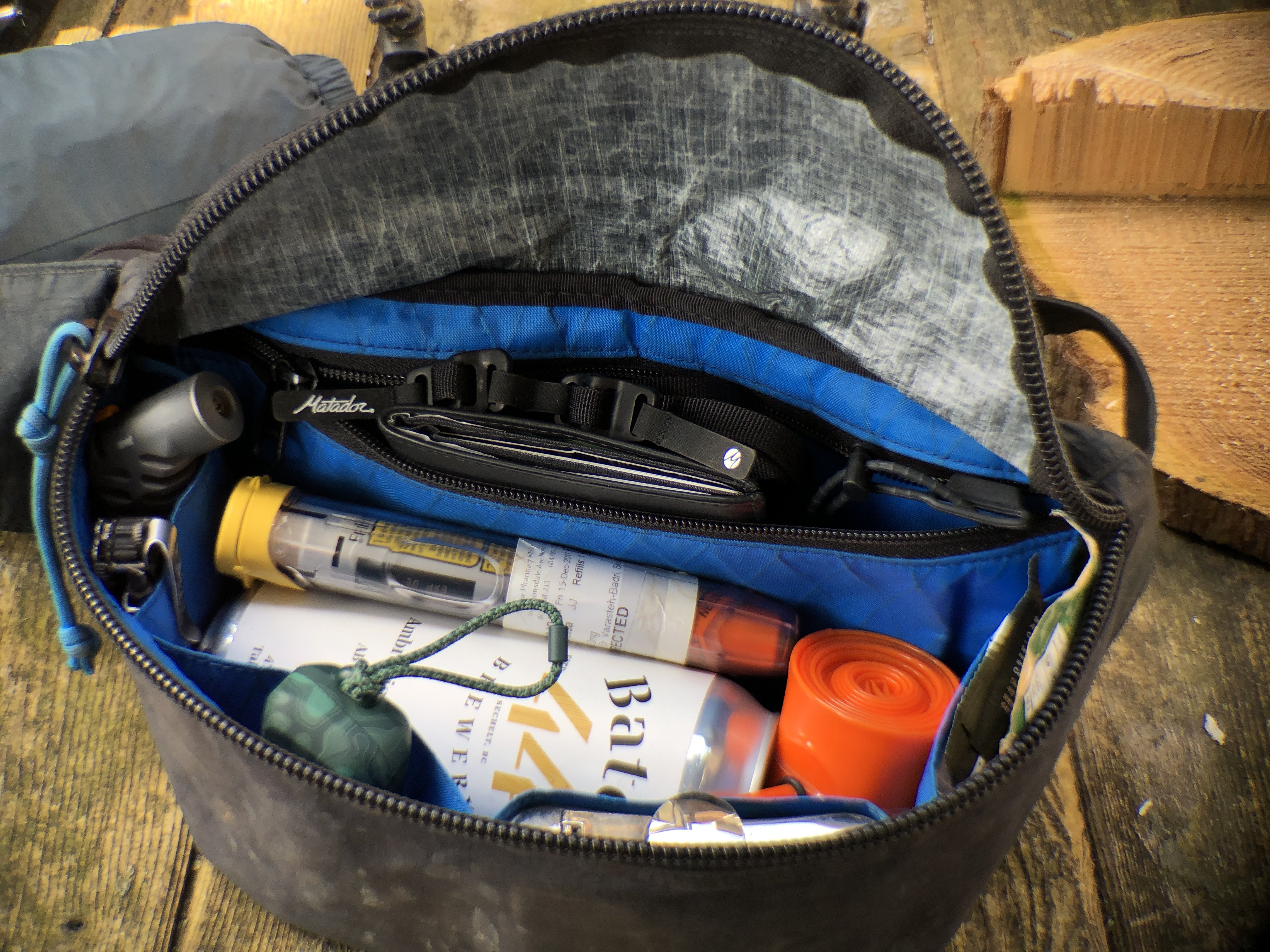
Just to prove it all fits in (including the beer).
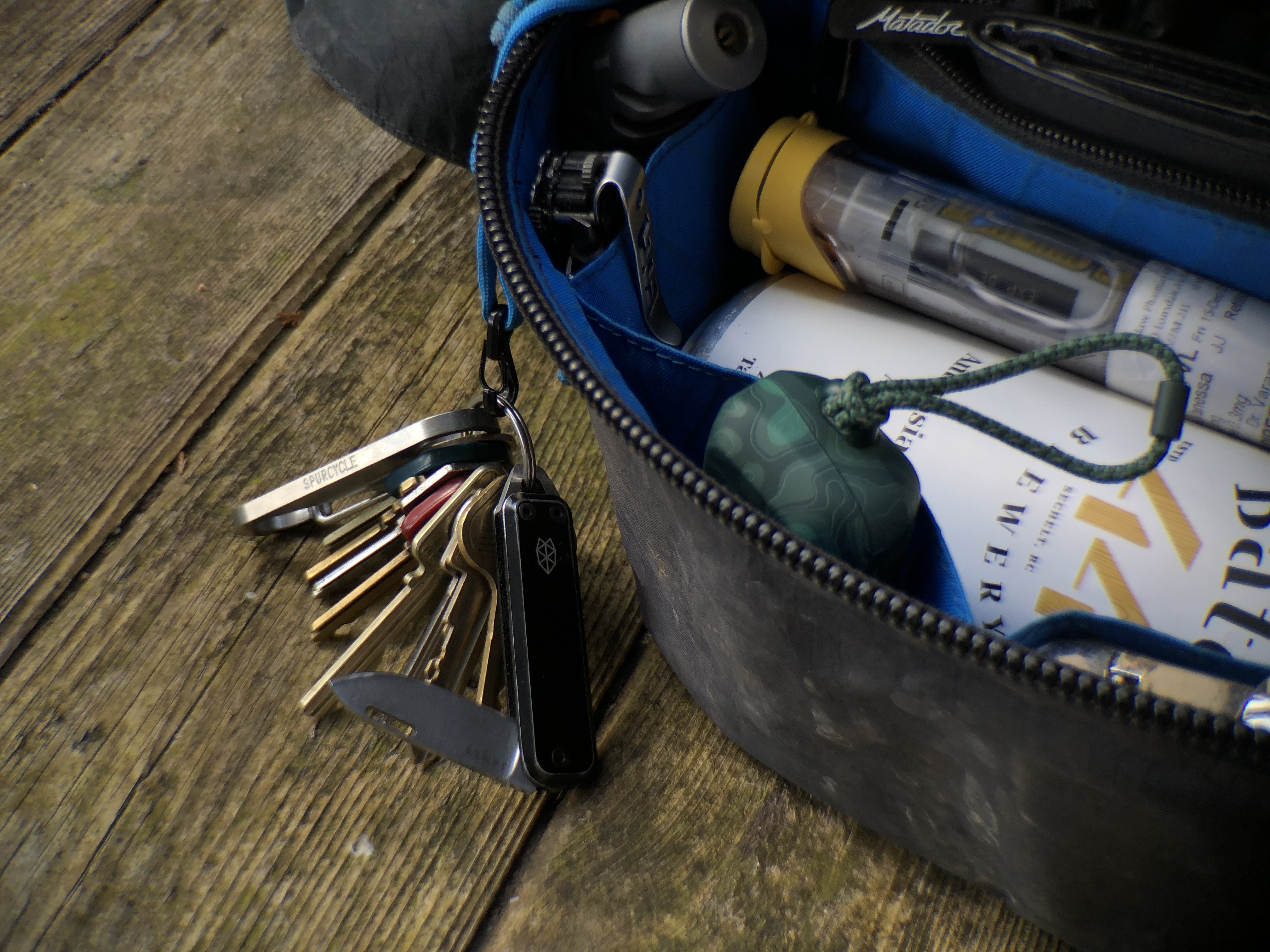
The James Brand makes sexy, albeit expensive, knives. The Elko is their smallest and cheapest. It's simple and strong, and here it's attached to a Spurcycle Ti key ring, which is attached to the Spurcycle Hip Pack...
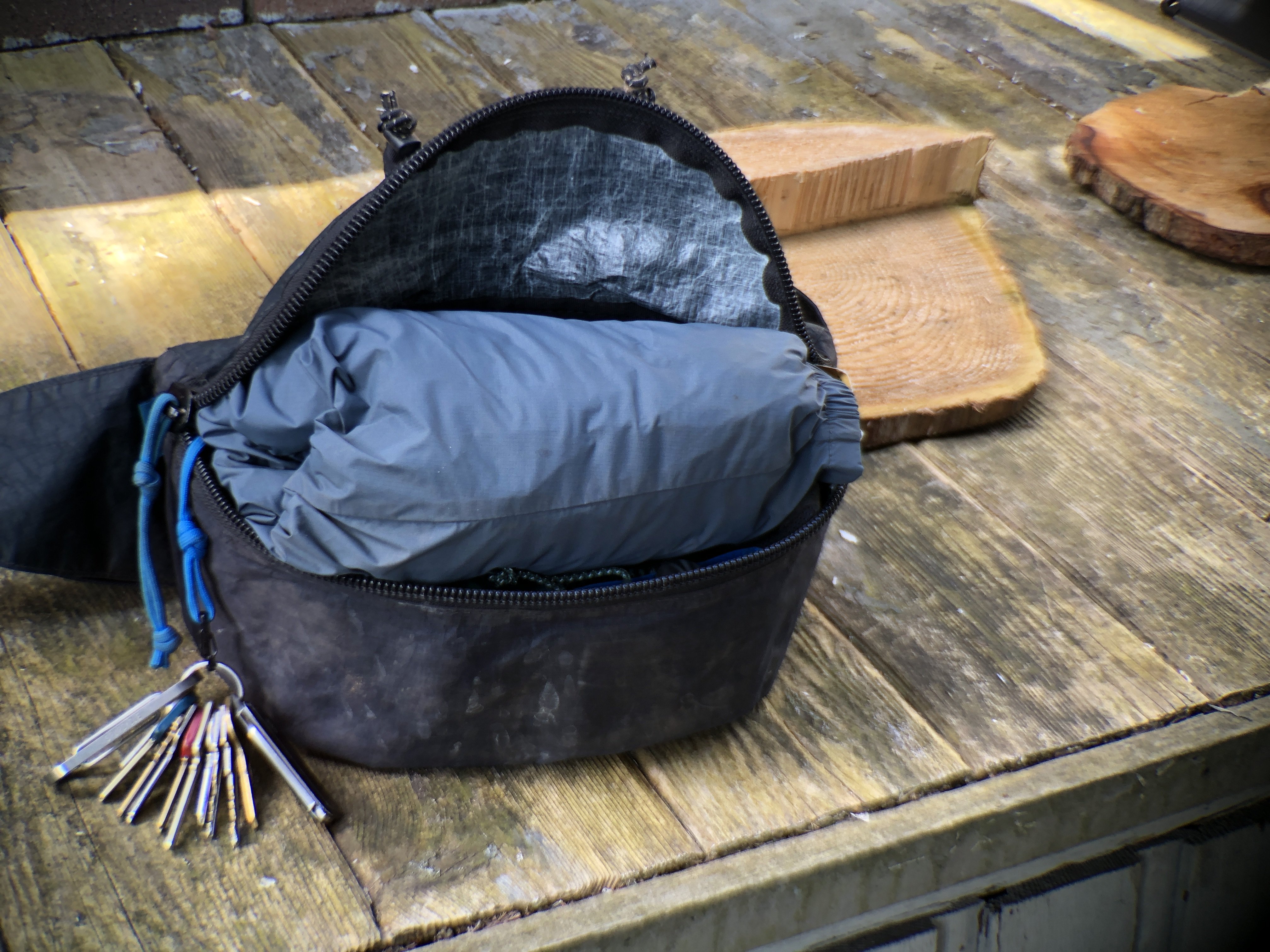
And in the end, it all fits in nicely.
Want to buy something from Roggey's bag? Here it all is. Keep in mind that purchasing something from one of the links below may benefit NSMB, without additional cost to you. We would never recommend a product we didn't believe it, so rest assured we stand behind our endorsement of all of the products listed below.
Spurcycle Hip Pack - $135 USD
Spurcycle Titanium Key Clip - $39 USD
OneUp EDC tool - Buy here
OneUp Pump - $73 CAD
OneUp Carbon handlebar - $138 USD
OneUp Stem - $85 USD
Topeak Smartgauge D2 - $34.95 USD
Camelbak Podium bottle - $12.95 USD
Blackburn Chicane bottle cage - $16.95 USD
Trailbutter - available in a variety of flavors and sizes here.
RX Bars - sweet deal for a dozen in my favourite Chocolate/Sea Salt flavour currently on amazon for $19 USD.
Jaybird Vista true wireless waterproof ear buds - $179 USD (currently on sale for $159)
Flylow Davis jacket - $125 USD
Dakine Thrillium Glove - $44.95 USD
Allett Leather ID/RFID wallet - $45/55 USD
Matador Better Tether 2-pack - $16.99 USD
Matador Re-Ties 4-pack - $10.99 USD
Julbo Aerospeed Reactive sunglasses -$219 USD
The James Brand Elko - $59.95 USD
Epinepherine pen for serious allergic reactions is the most exclusive thing on this list - you can only get one for a reasonable price with a Doctor's Rx.
Age: 46
Height: 6'1 // 185 cms
Weight: 195 lbs // 88 kg
Inseam: 32" // 81 cm
Bar width: 780 - 800mm // Reach: 485 - 500mm // Dropper: 180 - 200mm
Flats or clipless: Default clipless, flats for zesty stuff
Trail(s) of choice: VFR and a bunch I can't name

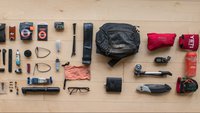

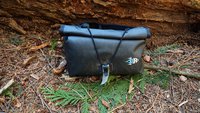
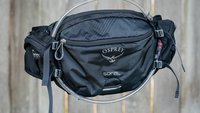





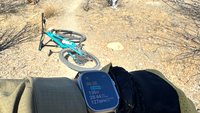
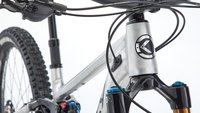
Comments
kekoa
3 years, 9 months ago
Good series. Enjoying it very much.
Reply
AJ Barlas
3 years, 9 months ago
Cheers Kekoa. More to come!
Reply
Sanesh Iyer
3 years, 9 months ago
Recently converted to frame bags, I never want to go back. Multitools also drive me insane, I carry L keys and a Park chain break. I've had too many times I've needed to fix a bike where I can't access a bolt with the multitool. It's also cheaper.
Reply
Pnwpedal
3 years, 9 months ago
Excellent point on tool access... My frame has a couple pivot bolts that my multi tool may not fit into. I think I'll do some testing today.
Reply
Sanesh Iyer
3 years, 9 months ago
Brake caliper seems to be the most common one I've dealt with. I do carry a multitool with screwdriver and torx bits (no access issues there!)
Reply
Vik Banerjee
3 years, 9 months ago
I'm with you on the frame bags. I love having everything on my bike.
Reply
Pnwpedal
3 years, 9 months ago
It's great that we have so many options to carry gear, as opinions on this topic are about as varied as it gets.
Maybe I'm becoming a weight weenie, but now that I'm on a light-ish carbon full squish bike I don't want to add any weight at all to the bike. I like the way the bike feels without 700-800g of water/bottle/cage plus 120g for a Oneup EDC system plus 200g for a Oneup Pump system plus 50-300g tube/strap combo depending on which tube you use. We're at 1.4kg/3lb added to your bike, which is supposed to be easy to handle and fun to ride. And frame bags add even more to that total. I don't really notice the added weight on my lower back/hips from the pack when it's adjusted right so I'll stick with it until I find something better.
Reply
Pnwpedal
3 years, 9 months ago
Great looking loadout and bag, but man that's a lot of stuff! I'm now running an Evoc Hip Pack Race 3L, and ~1L of that is taken up by the bladder (I don't fill it to the max so it stays flexible), but it's plenty for me. I also hate strapping junk to my bike so I have everything on my body. But I'm 100% on the Tubolito bandwagon now; the S-Tubo saved so much space. I guess I'll list my junk for the sake of conversation:
Evoc Hip Pack Race 3L
Water bladder usually filled to 1L
Crank Bros M17 tool
Small Leatherman tool
Lezyne CO2 inflator
KMC missing link plier/tire lever tool
Super cheap basic tire plug tool
Sram chain link
Tubolito S-Tubo 27.5
A few zip-ties
A small wrap of gorilla tape
A shoelace
A nylon strap with buckle to strap something on the outside of my pack if needed (usually a light rain jacket)
Wallet and car key go in the pack
Phone is zipped in my pocket
Clif bar in my other pocket
I think that's about it. I'm rarely more than an hour away from my car, so I don't pack too heavy. If it's really hot out I can carry a water bottle on the outside of my pack as well, though I haven't needed to yet.
Reply
Pete Roggeman
3 years, 9 months ago
If you put out all the stuff on your list and take a photo, and consider that my pump, OneUp EDC, and water bottle don't ride in the bag, you'll see they're pretty similar. Other than the beer, gloves, and jacket...you're right, mine has a lot of stuff.
Reply
Pnwpedal
3 years, 9 months ago
Yeah, I guess we're not too far off. The difference being spare gloves, spare glasses, pressure gauge, epi pen, beer, flask, and earbuds. If it's jacket weather I'll usually start off wearing the jacket then strap it to the outside of my pack when I get too hot.
I fully agree with your comment about first aid as well. I'm back and forth about what to carry... I have a couple nice smaller trauma packs with quikclot gauze, and of course a full size tourniquet for arterial bleeds, but I haven't been carrying them lately. I need to figure out what I really want and keep it on me.
Trail first aid gear would be a great article in and of itself. There's definitely a balance to be struck between preparedness and too much gear.
Reply
Pnwpedal
3 years, 9 months ago
So for my last ride I grabbed this out of my first aid drawer and put it on the belt of my hip pack. Seemed to stay in place well and has enough coverage to get me back to the truck if I'm bleeding.
https://www.adventuremedicalkits.com/trauma/quikclot/trauma-pack-pro-with-quikclot-swat-t.html
Reply
bishskate
3 years, 5 months ago
> Great looking loadout and bag, but man that's a lot of stuff!
And a lot of money. $1200+ USD!!
Reply
Velocipedestrian
3 years, 9 months ago
This had me giggling on the couch
> ...it's not hard to imagine a whole bunch of other things that fit in there and benefit from easy access as well as waterproof storage
Reply
Pete Roggeman
3 years, 9 months ago
I always appreciate knowing someone appreciates those casual little easter eggs.
Reply
fartymarty
3 years, 9 months ago
Pete, how does the Osprey 7l compare to the Spurcycle. I'm looking to carry a bladder in my hip pack as my frame doesn't have space.
Reply
Pete Roggeman
3 years, 9 months ago
Hey Marty, for carrying a bladder I would probably recommend the Osprey (Cam also lives his Camelbak) b/c it has a dedicated bladder pocket.
In terms of design ethos, Osprey and Osprey are opposites - Osprey packs in loads of features, and they're plain to see, whereas Spurcycle favours a simple, utilitarian but classy design approach.
As far as carrying stuff goes, the Spurcycle hip pack has more raw carrying space, but the Osprey I use (the Savu) makes up for it since the two bottle pockets can be used to carry a jacket or, frankly, anything that fits into that shape and can be held in place using one of the elastic cords - as well as the side pockets. The Seral, however, Osprey's hip pack with a bladder, won't be able to carry as much as the Savu or the Spurcycle simply because the water bladder takes up so much room. Again, the side pockets help, but their size limits the flexibility, and that's one thing I love about the Spurcycle (and the From High Above): there are some small pockets for organizing but otherwise, you're able to arrange it in your own way.
Reply
fartymarty
3 years, 9 months ago
Pete, thanks for the reply. I will take a look at the Osprey as I would rather carry a bladder. Riding buddies have the Hot Laps and Evoc which seem good as well. I read Andrews article on the Stealth however not being waterproof is an issue for use in UK.
Reply
Bikeridenow
3 years, 9 months ago
A bob trailer would be great option for carrying your hip packs ;)
Reply
BadNudes
3 years, 9 months ago
This comment has been removed.
Kelownakona
3 years, 9 months ago
So many of these lists ignore carrying even the most basic of first aid supplies.
Even an alcohol wipe to clean a wound would make a difference. Steristrips take no space up and weigh nothing (I have a packet in my handlebars and used them on a shin gash last summer) . Even a roll of zinc tape or microfibre tape is really small and can be used for a number of situations.
Reply
Sanesh Iyer
3 years, 9 months ago
Agreed. I'm interested to see what he's got in the works (that was mentioned).
Abdominal pad + Iodine drops (for purifying water) go a long way
Reply
Sanesh Iyer
3 years, 9 months ago
Agreed. I'm interested to see what he's got in the works (that was mentioned).
Abdominal pad + Iodine drops (for purifying water) go a long way
Reply
Please log in to leave a comment.